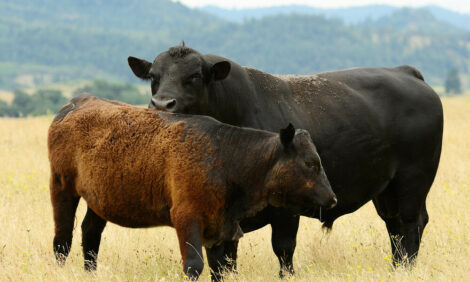



Reducing STECs in Cattle Prior to Slaughter
US - US Department of Agriculture (USDA) and university researchers have identified several treatments administered before cattle are slaughtered, or preslaughter interventions, that could reduce Shiga toxin-producing Escherichia coli (STEC) in cattle.Such preslaughter interventions include bacteriophages (viruses that infect and kill bacteria), probiotics (live bacteria that can benefit the digestive system), vaccines (biological preparations that alter the immune system), and sodium chlorate (chemical that kills the STEC O157:H7 strain).
However, few manufacturers have submitted applications for preslaughter intervention products to target STEC according to officials from USDA and the Food and Drug Administration. One exception is for vaccines to reduce STEC O157:H7.
For preslaughter interventions, USDA exercises responsibilities for licensing and regulating STEC vaccines. However, USDA’s approval requirements for these vaccines are unclear, according to some industry representatives.
Specifically, USDA’s general guidance does not address some of the unique challenges faced by manufacturers of animal health products seeking STEC vaccine approval. For example, the guidance does not explain that, if studies conducted in the laboratory are insufficient to demonstrate efficacy, the manufacturer would also need to demonstrate that the vaccine is effective in a field setting such as a feedlot.
In contrast, the Canadian Centre for Veterinary Biologics provides more specific guidance about when it requires the use of laboratory or field studies to demonstrate efficacy for vaccine license applications. Without guidance that gives manufacturers clear and more specific information they need to submit for an acceptable application, the approval process for STEC vaccines could face potential delays.
In addition to STEC O157:H7, which it stated in 1994 was an adulterant—a substance that renders food injurious to human health—in September 2011, USDA determined that six other STEC strains were adulterants in raw ground beef and beef trim (meat left after steaks and roasts are cut from beef).
USDA has tests for these six strains and plans to use them in slaughter plants starting in June 2012. However, it may be difficult and time-consuming to confirm positive test results because certain test components are either not commercially available for all strains or do not always provide clear results.
USDA is working to improve the tests and to find a commercial supplier for one key test component. Also, a few companies voluntarily test for these strains.
Further Reading
| - | You can view the full report by clicking here. |
TheCattleSite News Desk


